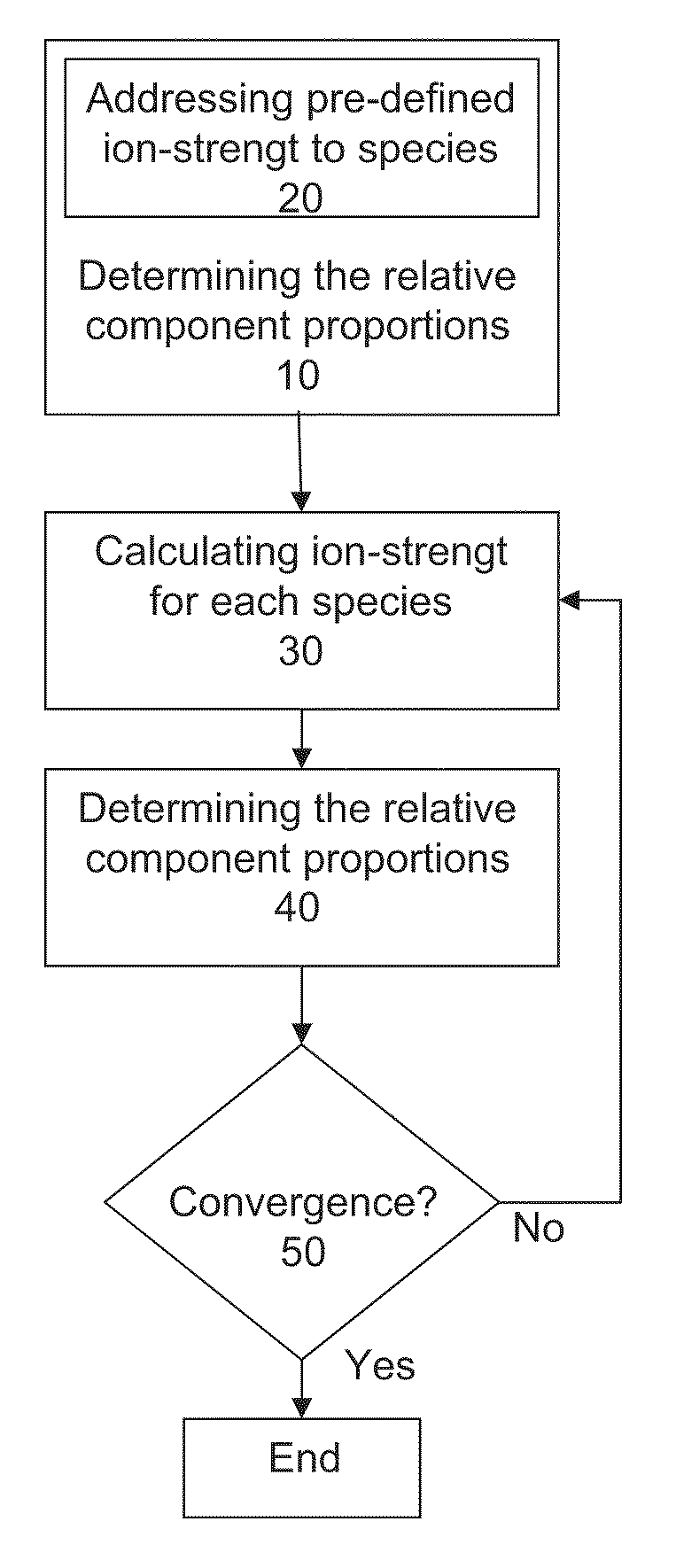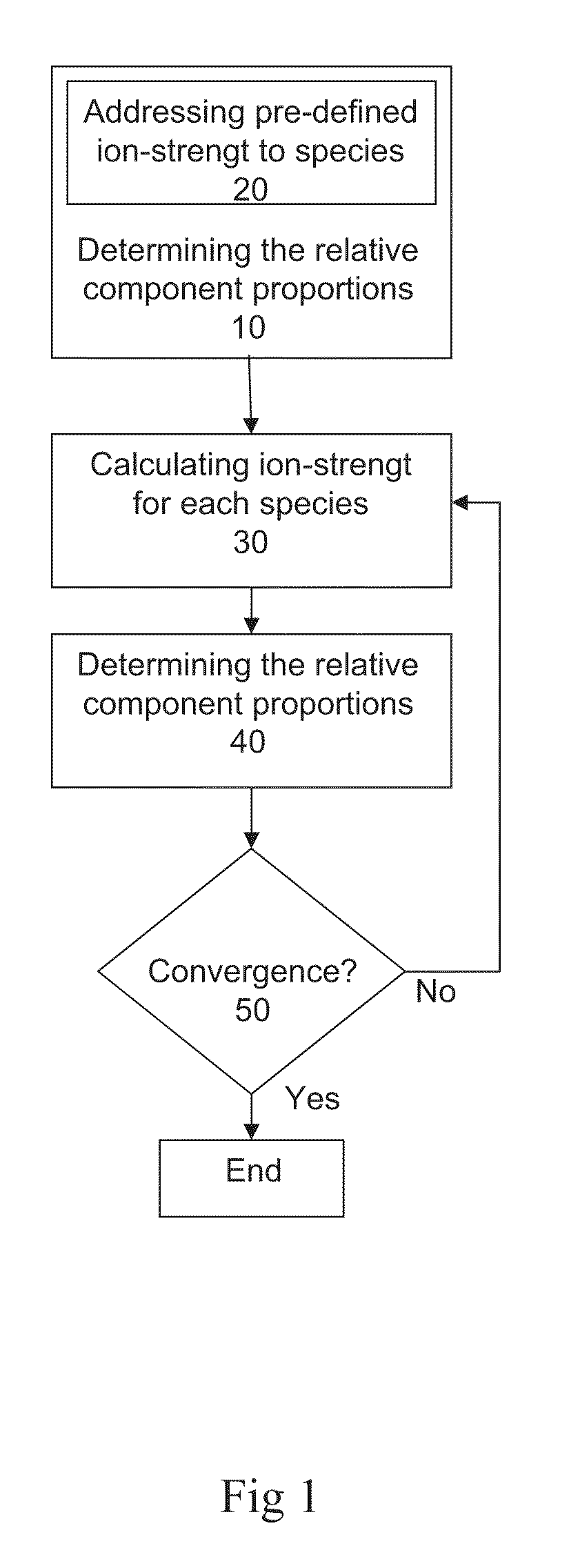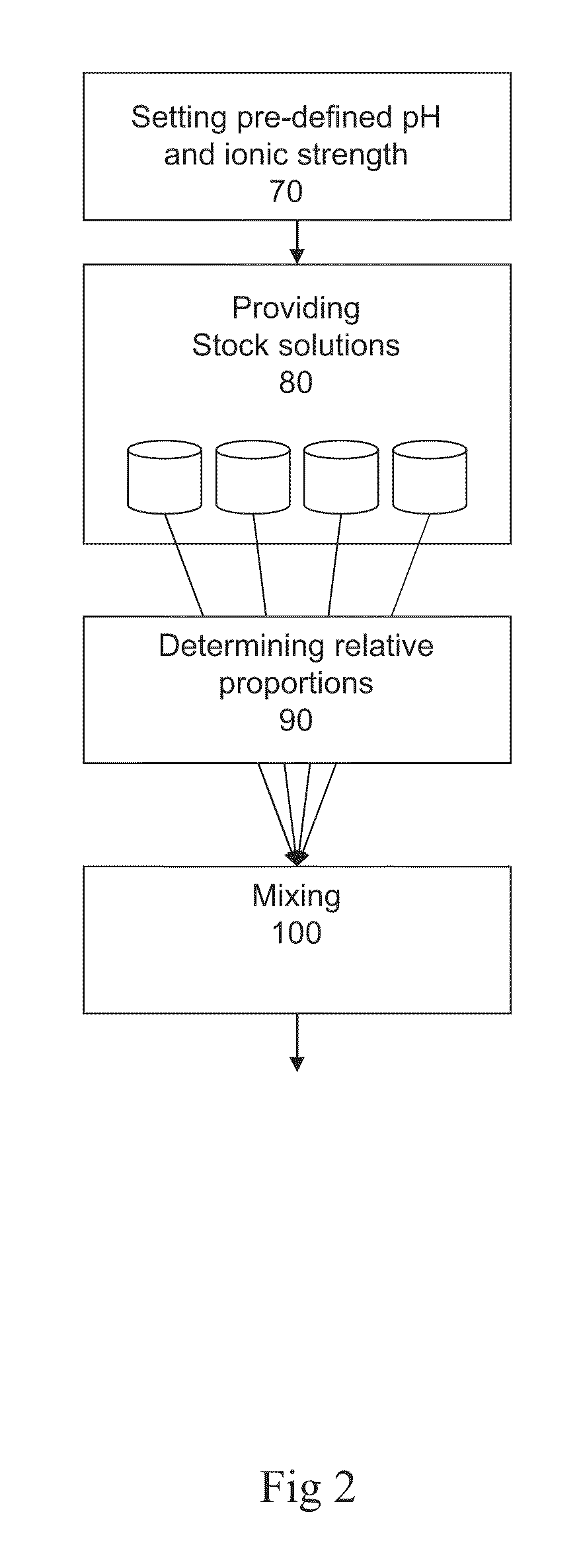Preparation of liquid mixtures
- Summary
- Abstract
- Description
- Claims
- Application Information
AI Technical Summary
Benefits of technology
Problems solved by technology
Method used
Image
Examples
example 1
Software Development
Materials / Investigated Units
[0098]All programming was carried out in a personal computer with a Pentium 4 processor and windows XP operating system.
Methods
[0099]In the first part of the development work, version 5 of Borland's C++ Builder was used and later version 4.2 of Visual C++ compiler was used.
Criteria for Acceptance
[0100]At the start of this experiment, it was decided that the method should give the right pH with an accuracy of 0.2 pH units. Since the specification of the pump and valve system used is 0.5%, and a normal stock concentration would be 0.2 M, given a minimum buffer capacity1 of 0.01 (see below) about 0.1 would correspond to the accuracy of the proportioning and 0.1 to the accuracy of the algorithm. The minimum buffer capacity was taken as buffer capacity is defined as |dn / dpH|, where do is the (small) change in amount (in mols) of strong acid / base giving rise to a (small) change dpH in pH. The accuracy of the algorithm was estimated by compar...
example 2
Materials / Investigated Units
[0132]As in Example 1.
Methods
[0133]Version 4.2 of visual C++ compiler was used.
Results
[0134]The program “Buffalo Plus” was written in Visual C++ and can be run in Windows for the accurate calculation of buffer pH at ionic strengths and buffer concentrations as high as 1M for the following buffer systems: Phosphate, Citrate, Acetate and Tris.
Structure of the Program
[0135]As for Example 1 with one addition: The program can also be run in a third mode “Optimize parameters” which is used to simultaneously optimize parameters (radii of the different charged species of each buffer system) using the Newton Raphson method.
Monoprotic vs Polyprotic Buffers
[0136]As in Example 1.
Differences and Similarities Between the Modes.
[0137]As for Example 1 but the Calc_pH and Optimize parameters modes kmax=3.
Choice of Titrant
[0138]As in Example 1.
[0139]As in Example 1,
Loop Over Number of Buffer Components, Buffer Parameters
[0140]As in Example 1.
Lo...
PUM
 Login to View More
Login to View More Abstract
Description
Claims
Application Information
 Login to View More
Login to View More - R&D
- Intellectual Property
- Life Sciences
- Materials
- Tech Scout
- Unparalleled Data Quality
- Higher Quality Content
- 60% Fewer Hallucinations
Browse by: Latest US Patents, China's latest patents, Technical Efficacy Thesaurus, Application Domain, Technology Topic, Popular Technical Reports.
© 2025 PatSnap. All rights reserved.Legal|Privacy policy|Modern Slavery Act Transparency Statement|Sitemap|About US| Contact US: help@patsnap.com



